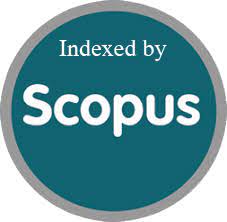Management of Intestinal Strictures Post Conservative Treatment of Necrotizing Enterocolitis: The Long Term Outcome
DOI:
https://doi.org/10.52783/jns.v5.295Keywords:
Necrotizing enterocolitis, Intestinal stricture, Primary anastomosis, Neurodevelopmental delayAbstract
Objectives: Evaluating the long-term outcome of the surgical management for intestinal strictures developing after necrotizing enterocolitis (NEC).
Patients and methods: This is a retrospective study of all patients with an intestinal stricture after completion of conservative management for NEC. They were treated during the eight years period from 1st January 2008 to 31st December 2015.
Results: During the study period 67 infants had an operation for NEC, of which 55 had emergency surgery. The remaining twelve infants (6 males) had a stricture and were included in the study group. Their median gestational age was 35 (range 27-40) weeks and the median weight was 2180 (range 770 - 3290) g. The onset of NEC was seen at a median of 2 (range 1- 47) days. The median peak C-reactive protein (CRP) level was 73.1 (range 25.2 – 232) mg/dl. Isolated strictures were seen in 9 (75%) patients. Two-third of all strictures (n=15) were located in the colon. Surgery was done at a median of 5 (range 3 - 13) weeks after diagnosing NEC. Primary anastomosis was the procedure of choice; only one needed a temporary colostomy. This cohort had no mortality during a median follow up of 6.25 (range 0.5 - 7.6) years, whilst the overall death rate for NEC was 15 (22 %). Two fifth of the group developed a neurological / sensory impairment.
Conclusion: One fifth of the surgical workload for NEC is related to post-NEC strictures. Most strictures are located in the colonic region. In the long-term no mortality and no surgical co-morbidities were observed.
Downloads
Metrics
Published
How to Cite
Issue
Section
License
Copyright (c) 2016 Journal of Neonatal Surgery

This work is licensed under a Creative Commons Attribution 4.0 International License.
You are free to:
- Share — copy and redistribute the material in any medium or format
- Adapt — remix, transform, and build upon the material for any purpose, even commercially.
Terms:
- Attribution — You must give appropriate credit, provide a link to the license, and indicate if changes were made. You may do so in any reasonable manner, but not in any way that suggests the licensor endorses you or your use.
- No additional restrictions — You may not apply legal terms or technological measures that legally restrict others from doing anything the license permits.










